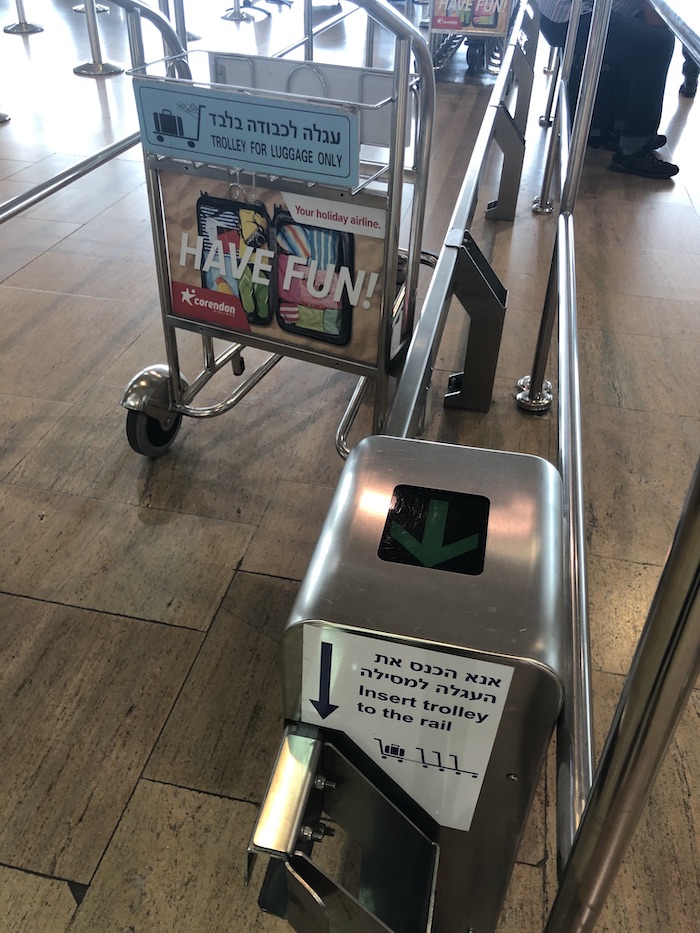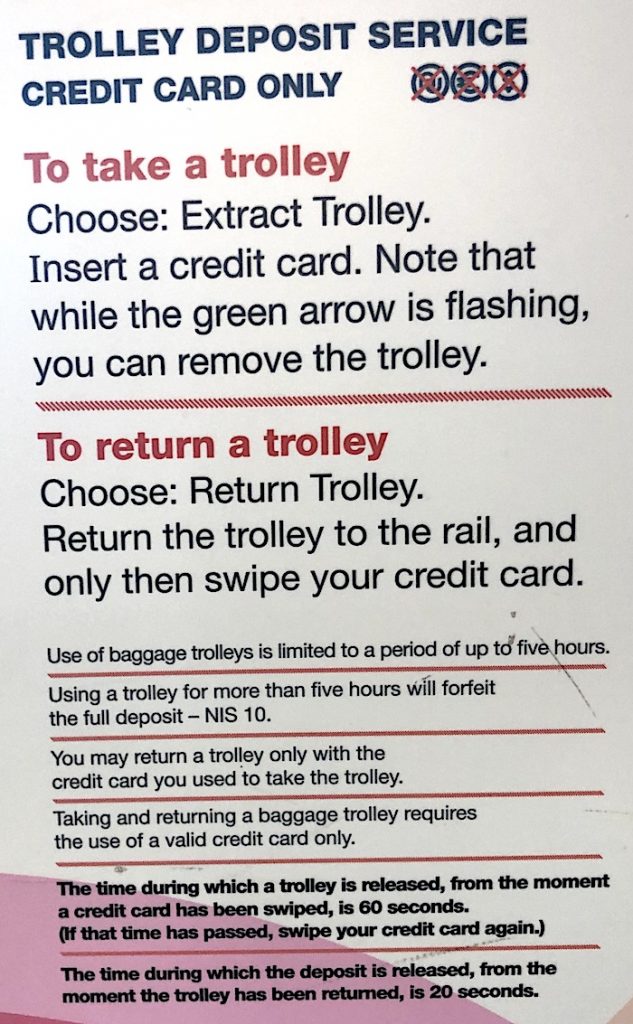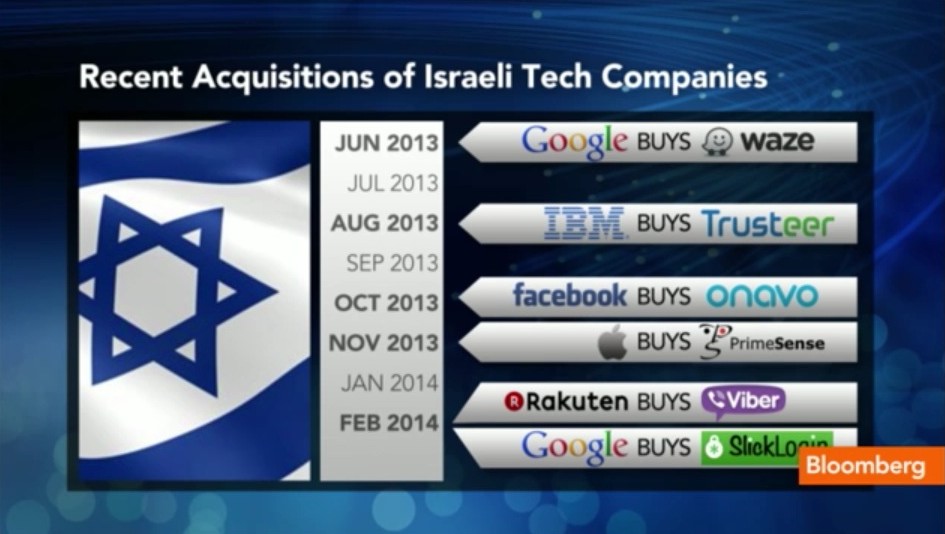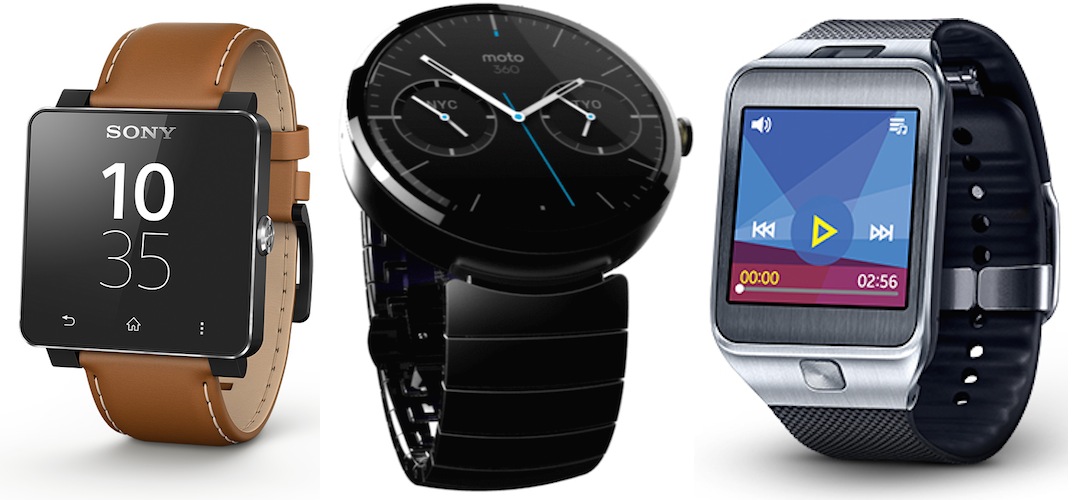Recently I picked up my wife at the airport. She arrived with her bags on a luggage cart, as is common in airports across the world. This airport, Ben Gurion Airport outside of Tel Aviv, was famous for years for being one of the only major airports that made luggage carts available for free. That changed not so long ago, and like other airports you need to rent the carts. That, in and of itself, isn’t that big of a deal. Even renting the cart isn’t a big deal. Returning it, on the other hand, is a user experience disaster.
In all the airports I’ve rented carts from, you pay for the cart (sometimes with cash, sometimes with a credit card), use the cart to move your bags, and then you either return the cart to a luggage cart station, or you leave it at the curb and someone would come collect it. In the US it was once common to get a small amount of money back when you returned the cart to a station, to incentivize you to return the cart instead of leaving it on the curb or in the parking lot. This is kind of like the recycling surcharge on bottles and cans, where you pay more when you get the bottle, but you get a bit back when you recycle it.

I don’t usually need a cart when I’m traveling myself so I’ve only run into these particular carts when picking up family at the airport. I’ve had the same problem both times, although I forgot about the first time when I was dealing with the cart this time.
The first time I ran into a problem was when I was picking up family and I took their cart with their luggage to the car while they had stopped to buy something in one of the airport stores. I walked ahead, unloaded the cart, and went to a station to return it, not far away in the parking lot. I pushed the cart into the station, and then was asked for the credit card I used to rent it. Obviously I didn’t have the credit card. I waited for my family to arrive, but after a short time the screen reset and there was no longer a way to insert the credit card. So what happened after that? Did they charge my family member more money because they didn’t use their credit card when returning the cart? Did they have a way to know that that specific cart was returned when it was?
Forgetting that earlier encounter with these carts, I picked up my wife recently and while she had to deal with something in the airline’s office, I went to drop off the bags. After unloading the luggage I went to the station, when I realized the problem. Here are the instructions on the machine:

Reading the small print you can make an educated guess at what happened the first time. My family member probably lost a 10 NIS deposit, which is about $2.85, after 5 hours passed without the credit card being swiped with a cart returned, even though the cart had been returned. This doesn’t make much sense, and here’s why.
There are three steps to return the cart:
- Choose: Return Trolley
- Return the trolley to the rail
- Only then swipe your credit card
The first problem is what I ran into the first time. I chose ‘Return Trolley’ on the touch screen, and returned the trolley to the rail on the station, so it clicked into the one-way lock. I then looked at the next step and it required a credit card I didn’t have. Who thought it was a bright idea to have the cart returned before the credit card was swiped? There are two possibilities here. Either the designer decided this was a good outcome (more money for the operator), or possibly, and more likely, they designed themselves into a corner. They decided on only accepting credit cards. That’s okay. But when deciding the return method, they realized that if they required the credit card first, only the person who rented it would be able to return the cart. By allowing anyone to return the cart, it prevents the problem of someone not being able to return the cart at all. It also makes it easier for staff to return carts without needing any special method to do so.
It seems to me the obvious solution to this problem is to be able to identify each cart when being returned, using something like NFC or even a simple bar code on the side of the cart that could be scanned by the station when the cart was returned. No need to have the original card, no need for the extra step of swiping a card at the end of the return process, just return the cart and go.
The company that makes the cart, even even has a solution to this problem, because in another version of their cart system shown in a promotional video, they print out a QR code to scan when the cart is returned:
This machine returns cash, which the one in Ben Gurion doesn’t handle, but it’s the same concept. In this case the QR Code is needed because the person used cash, so they have no way to prove they were the ones who rented the cart. The assumption by the designer of the credit card-only version is you don’t need a QR Code because you have the card. That’s a a bad assumption.
As a kid I remember returning carts to the get the quarter that was refunded when the carts were returned. I don’t know if this is still common, maybe they all have this absurd confirmation step now. I do remember the cart staff being annoyed when kids returned carts that were not theirs in order to get the money. However, it seems the only benefit of confirming the person returning the cart is the same person who rented it is to the operator of the carts that has to refund less deposits. It’s true that the deposit is intended to incentivize the renter to return the cart, and kids returning the cart to get a quarter isn’t what was intended, but it accomplishes the same goal of having the carts returned. When deposits are linked to credit cards, this incentive doesn’t exist for people who didn’t rent the carts (such as kids), but even so if the cart is returned in the allotted time, is it such a bad thing to refund the deposit to the person who rented the cart even if they didn’t return it?
The easy solution of recognizing the carts as they are returned, which simplifies the process for everyone, isn’t used. This reminds me of the rebate industry. I was working once for a consumer electronics company that offered a rebate on buying their devices. You filled out a card and mailed it to an address, and the rebate was sent to you in the mail. We didn’t handle the rebates ourselves, but instead used a company that specialized in them. The company was so good at what it did that they could tell you if your product cost X and you offered Y% off the product, what percentage of purchasers would send in their cards. The more a product cost and the more the rebate percentage was, the more likely someone was to bother with sending in the card. Therefore if you were offering 5% off a $10 product you wouldn’t get many people to bother (especially if they had to pay for a stamp). If you were selling a $1000 product and offering a 50% rebate, you’d get a lot of people sending in the rebate cards (although even then likely not 100%). That’s why if you were offering 30% off a $100 product, it wouldn’t actually cost you $30 per device on average, but much less. If the rebate redemption rate was only 10% then your actual cost per device for offering the rebate would only be $3 (instead of $30 if there was a 100% redemption rate).
In the same way, the cart operators are assuming the effort to return the carts properly isn’t worth many people’s effort, and correcting a problem like returning the cart when you don’t have the card ready to swipe, would be even less likely to be followed up. And me? I ended up rolling the cart back into the airport, where I was questioned by security (I guess walking into the airport with an empty luggage cart is suspicious), found my wife and returned the cart.


